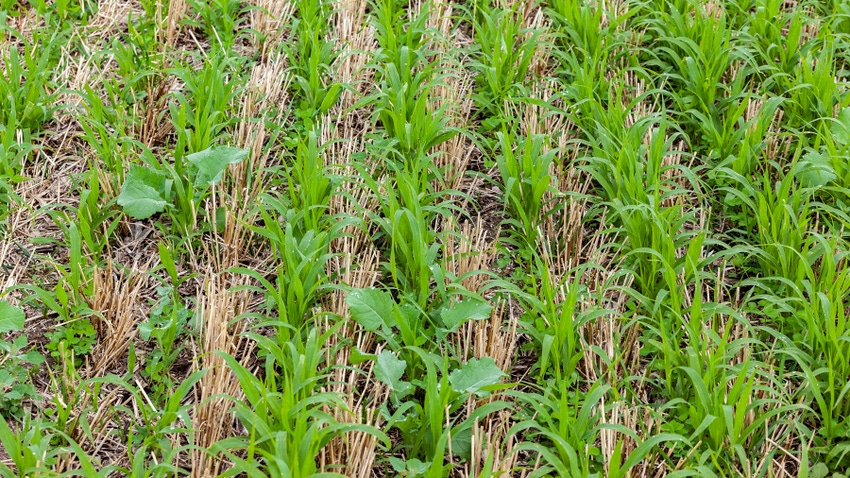
A regenerative agriculture system is defined as a semiclosed system optimizing inputs and minimizing waste — and, consequently, benefits the environment, soil health and soil biodiversity, and optimizes productivity and economic returns. The key is matching these practices to local or regional climate to achieve best results.
The link between the concepts of input and output is based on optimizing agriculture products, while reducing negative environmental impacts. This approach is characterized by improving efficiencies and coupling environmental benefits, while positioning farming as a potential solution for climate change, and for providing economic opportunities that build on local agriculture resources. These principles and benefits are universal and achievable in different environments, with some flexibility to accommodate the prevailing regional climate and soil conditions.
The components of regenerative agriculture are wide and diverse, reflecting the holistic approach of ecological principles for food production, yet protecting ecosystem functions. Natural system diversity in plants and organism components are influenced by many factors in the surrounding environments. The use of regenerative practices in different regions must recognize these regional differences and limitations in the selection of certain approaches from a suite of choices within the portfolio of regenerative agriculture.
Successful applications
The successful application of regenerative practices should take into consideration climate differences; soil types; plant suitability for certain areas; disease pressure; and tillage systems’ adaptation to regional hydrology and climate conditions, cover crops suitability, etc. These considerations require us to rethink the cookie-cutter approach and use smart choices that can optimize the environmental and economic outcomes.
There are many difficulties associated with the adoption of no-till and residue buildup in a temperate climate — as in the Midwest, for example. However, many successful farmers adopted such practices with great outcomes by fine-tuning and tweaking their practices to overcome climate limitations. Here are a few considerations for successfully adopting climate-smart agriculture practices, such as no-till, residue cover and cover crops as part of a stacked system approach in challenging climate conditions:
Managing soil hydrology. A temperate climate is characterized by wet, cold and poorly drained soils. Adopting no-till, residue cover and cover crops in these areas, requires some additional fine-tuning to manage excess water using field drainage to lower the water table level and remove excess water from the root zone. This provides provide a balanced soil environment of water and oxygen within the root zone. No-till and residue cover — by their very nature — enhance water conservation and storage and reduce soil evaporation, in addition to other benefits of soil carbon sequestration, soil health and microbial diversity. These modifications can enhance soil’s benefits in these areas.
Cover crops. Cover crops are a critical component of the regenerative agriculture suite of management practices. The practice has a wide range of effects, not only on soil health and ecosystem services, but also is a strong companion to a successful no-till system by modifying soil hydrology and increasing water use and extraction, especially in wet areas after harvest. This can have significant benefits in wet and poorly drained soils, where no-till use can be challenging.
The combined value of no-till and cover crops in building strong and water-stable soil aggregates increases the capacity of soil for greater water-holding capacity, greater water movement, and warmer soil conditions at the top 2 to 4 inches by 2 to 3 degrees F, as documented by research. These changes in soil temperature and water content can have positive effects in providing optimal soil conditions for successful seed germination in early-spring planting.
Managing residue. Part of a successful no-till system in different climates is how crop residue, such as corn, wheat and other residues that are not fragile, are managed to achieve full benefits for soil health, soil carbon sequestration, and soil erosion control, to name a few. Such management is critical, especially in areas where water shortage is the main concern. To optimize water capture and storage, leave residue fully intact at least 12 inches high to trap snow, slow rainwater movement and increase water intake and infiltration opportunities. Also, managing residue with no-till in wet areas can be achieved by leaving the residue intact and avoiding shredding to increase water evaporation. Similarly, small residue removal, not to exceed 25% as documented by research, can be effective in reducing wet soil conditions’ effects.
Crop diversity. An important element of regenerative ag practices is crop diversity within any cropping system to achieve the objectives of regenerative ag in enhancing nutrient cycling, microbial diversity and carbon sequestration. However, to achieve an efficient outcome, the selection of suitable plants within any crop rotation must take into consideration climate conditions, soil type, nutrient needs, water availability and synergetic effects on the following plants within the rotation.
For example, the inclusion of legumes within a crop rotation can have a significant effect on the nutrient supply and the microbial community for ensuing plant and soil health. However, climate conditions, such as moisture availability, heat units, soil temperature, etc., need to be weighed in making such decisions. The decision to use different crops and plants in crop rotations or sequence should consider not only water and nutrient requirements, but also the management needs and input costs that fit the soil’s potential for yield.
Modifications of agriculture practices to fit prevailing climate conditions, rather than a using one-size-fits-all approach, is the smart part of these practices by working with the natural setting. The other approach in applying these practices is to think in terms of scale and targeting an approach that may differ from one region to another to optimize the efficiency of outcomes.
If we look at the field level, certain areas in the field may not be suitable and profitable for crop production regardless of the operation input of when fertilizers and other management practices are used. These areas are called “marginal” in terms of return, and they will be a better choice for another use, such as natural habitat to enhance wildlife and increase biodiversity. The same approach can be used on a watershed, or regional level by targeting the application of certain practices, such as a combination of no-till and strip tillage to manage the high level of residue in wet areas to accommodate soil conditions, cover crops, field drainage, and water table level control. These options can be implemented as single or stacked practices to optimize outcomes economically and environmentally.
Al-Kaisi is a professor emeritus of soil physics (soil management/environment) at the Department of Agronomy, Iowa State University, Ames.
About the Author(s)
You May Also Like






